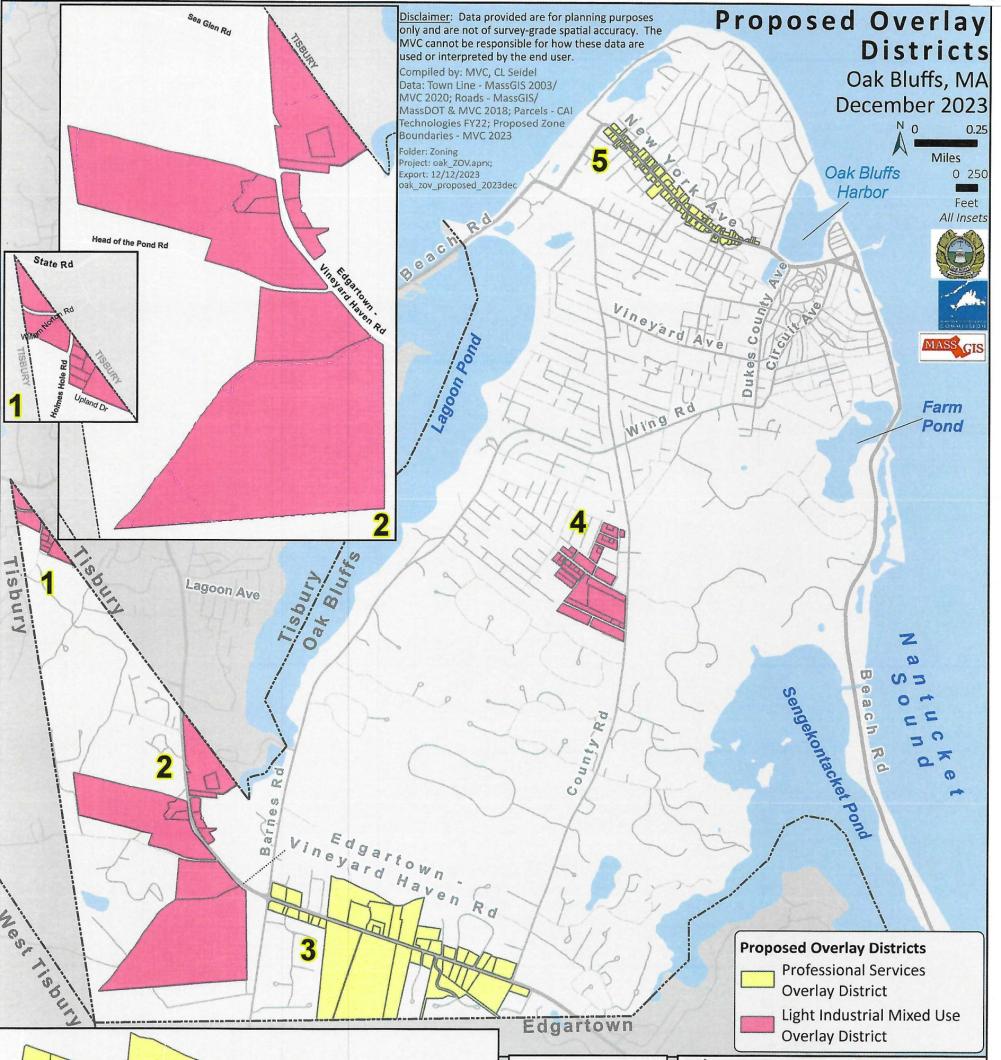More than 100 people joined a virtual public hearing Wednesday evening to review proposed zoning bylaw changes in Oak Bluffs, including five new overlay districts allowing potential business uses in residential neighborhoods.
Businesses in the overlay districts would still have to apply for permits and follow town rules, planning board chair Ewell Hopkins said.
“It does not automatically take a residential area and make it a commercial area. It allows for an application for commercial use,” Mr. Hopkins said.
Two of the overlay districts, proposed for New York avenue and for Edgartown-Vineyard Haven Road between Barnes and County roads, would be zoned for professional uses that don’t require heavy equipment and materials storage, such as medical and dental offices.
The other three overlay districts would allow permit applications for light industrial and mixed-use businesses such as warehouses, construction and landscaping storage and, on parcels of at least 20 acres, mining. The inclusion of mining on the list of potential uses drew objections from residents and property owners who spoke at the hearing.
“It seems to me that with certain activities that are objectionable... we could expressly prohibit certain things like mining,” said Janet Baker.
But to Peter Goodale, whose Oak Bluffs company mines the sand used by public works departments to condition Vineyard roads in winter weather, it’s a matter of local self-sufficiency.
“Mining is for the sole purpose of continuing to provide sand to the Island instead of importing it. It’s the town’s choice if they want to import or source locally,” Mr. Goodale wrote in the hearing’s chat stream.
Others noted that the overlay districts would provide much-needed capacity for local businesses that can’t find space to operate legally under current zoning rules.
“We all have to accept the fact that we have certain things that have to take place on the Island and we need to allow a mechanism for that to happen, otherwise everything’s going to be coming from off-Island and regular people won’t be able to have jobs,” Tisbury contractor Mark Nicotera said.
The strongest objections to the light industrial/mixed-use overlay proposals involved what’s being called Area One or the Holmes Hole Road Zone. Located at the thin end of a wedge of Oak Bluffs that juts sharply into Tisbury west of the State Road business district, the zone includes Upland Drive and William Norton Road.
Residents there say their neighborhood is already blighted by unpermitted industrial uses including a boatyard, a mason’s yard, a contractor’s yard and many work trucks, and that the town is not able to enforce its existing zoning rules in the area.
“In order to get to this section of Oak Bluffs, you have to drive miles through Tisbury,” Upland Drive resident Mark Jenkins said.
“It is too far for the town officials, who are already too far stretched in terms of their activities. To provide oversight is simply impossible, which is why we are seeing what we are seeing happen,” Mr. Jenkins added, asking the planning board to withdraw Area One from consideration as an overlay district.
The Tisbury planning board also objects to the Area One proposal, chair Ben Robinson said at Wednesday’s hearing.
“Tisbury provides all the services to that area, whether you live in Tisbury or you live in Oak Bluffs....If they call the police or the ambulance or the fire, it’s Tisbury that’s responding in that area. The road maintenance is taken on by Tisbury,” he said.
“And really, the most important point is that area sits smack dab between all three of our public water wells,” Mr. Robinson said.
Mr. Hopkins closed Wednesday’s hearing three and a half hours after it began, saying he would read the saved chat stream afterward to make sure every comment has been received.
Oak Bluffs voters will decide on the proposed bylaw changes at their annual town meeting April 9. Each of the five overlay districts will appear on a separate warrant article.
Other proposed changes include updated language defining sheds, accessory dwellings and home business parking, easing frontage requirements for affordable housing parcels and adding fractionally-owned properties to the short-term rental bylaw.
A two-thirds majority is required to pass bylaw changes.







Comments (7)
Comments
Comment policy »